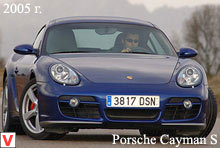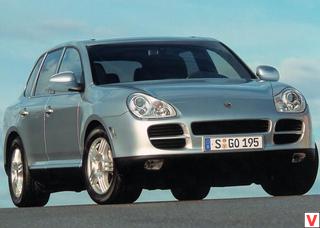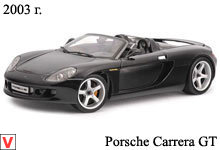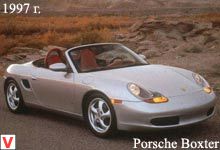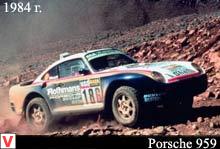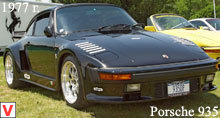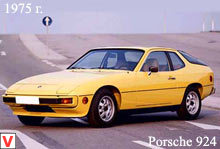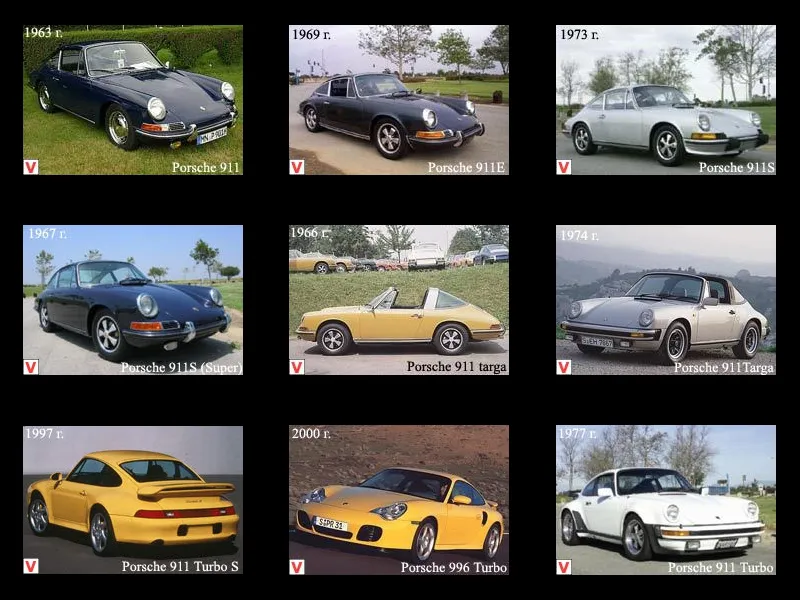
The history of 911 began in 1963, when it was first shown at the Frankfurt auto show. Then no one foresaw that the car will last on the conveyor for more than fifty years and become a legend of all times and peoples. The name, however, was different. The model was called the Porsche 901. However, a scandal erupted with the firm Peugeot, which claimed the rights to the model names with a zero in the middle. In Porsche, they did not persist, and, without further ado, changed the zero to 1.
As a result, the world received the same 911 - a stubborn rear-wheel drive and rear-engined car, which replaced no less stubborn 356 models. With its simple form, the 911 model still reminded of the style and quality of its predecessor. But Ferry Porsche set a clear task for developers and designers: the new car should be more powerful and more powerful.
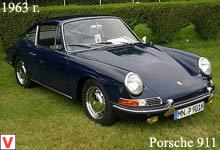
New solutions were expected in terms of comfort. The car is not easy to quickly slide on the asphalt, and have a spacious interior and a decent trunk. The last project of the car still reminded at first glance of the model 356, but in fact there were global changes.
Narrow doors and a large window area contributed to the feeling of more space. The distance between the wheels was 15 cm longer. This gave more space and also allowed to optimize the chassis. The modification of the first years of release was equipped with a 2 liter 6-cylinder engine with a capacity of 130 horsepower. The stated maximum speed was 210 km / h. Acceleration from 0 to 100 km / h for 8.5 seconds. The power unit was mostly made of aluminum so as not to exceed the total weight of the car.

The drive system was from automotive sports: a dry-sump lubrication system and camshafts for each cylinder located on top. Together with a manual 5-speed gearbox (first gear left below), the drive system made it possible to provide more power. A new one appeared in the wheel suspension: compact shock-absorbing struts were built in front, thanks to which a space was made in the trunk. At the rear, the 356 swinging axle bridge was replaced with a diagonal independent suspension arm. New in the 911 model has become a rack and pinion steering, and 15-inch steel wheels with narrow 4.5-inch tires are equipped with four disc brakes.
All these advantages contributed to the fact that every driver saw a super modern sports car in the new Porsche 911. In 1965, at the Frankfurt Motor Show, Stuttgarts showed an unusual version of a convertible. This is how the historical name 911 Targa appeared. The name was chosen in honor of the famous Italian race Targa Florio, in which Porsche shone at that time. In addition, one of the meanings of this Italian word is “shield” - at first, Porsche presented the 911 Targa as “the first safe convertible”.

Behind the backs of the front seats of the open Porsche 911 there was a wide and, frankly, not the most elegant safety arc. A removable plastic panel was installed directly over the riders' heads, and a soft awning with a plastic window covered the rear seats. The rear window is made of synthetic material connected to the safety arc of the body with a zipper. This design increased the noise when driving, moreover, it was made of thin material. This deficiency was eliminated in the model of 1969, when the upper was made of plastic, and the well-fixed rear window was made of molded glass.
911 Targa lost the character of the cabriolet, but the interior has become better protected from moisture and wind. By the way, the first traditional cabriolet based on the 911th appeared only in 1983 - almost 20 years later than the first Targa. In 1966, the 911S (Super) appeared with a herd of 160 stallions, which increased the maximum speed to 225 km / h. Acceleration from 0 to 100 km / h began to take 8 seconds. This was achieved thanks to more sporty camshafts, larger valves, upgraded cylinder heads, a higher degree of compression, and a Weber carburetor.
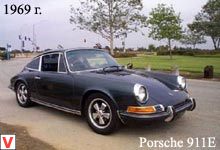
In addition, an additional stabilizer on the rear axle and a shock absorber from Kony took care of the suspension and balance of the car. Externally, this version is very slightly different from the Porsche 911, but stood out with 5-spoke alloy wheels. In 1967 (from that moment on, the A-Series went) a more economical modification of the 911T (touring) with a power of just 110 hp appeared. and a four-speed gearbox. At the same time, the old version of “just” 911 was equipped with a more expensive cabin and began to sell under the name 911L (luxurios).
In 1967, Porsche introduced another version of the 911th model, the 911 R. The engine power was increased to 210 hp. at 8000 rpm A total of 20 cars were released this modification. The 1968 (B-Series) model year revealed to the world a modification of E, which, to be honest, simply replaced the previous 911L, however, was singled out by Porsche as the year of modification B models. The reason for this is a serious increase in power due to the fuel injection system from Bosh. The E version had a power of 140 hp, and the 911S version had 170 hp. 1970 was marked by an increase in engine capacity to 2.2 liters.
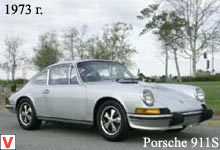
Power also increased 125 hp in the 911T, 155 hp the 911E, and 180 hp for the most powerful 911S. The latter had a top speed of 236 km / h and accelerated from 0-100 km / h in 7 seconds. The series of this model year was called the C-Series. It is interesting that the 911T was completed with the old 4-speed gearbox, but the E and S-new five-speed gearbox. In 1970, the 911 S Monte Carlo Prototype was introduced. This sports version, made on the basis of the 911 S. Porsche engineers have tried to reduce the weight of the car as much as possible.
Wings and hood made of lightweight fiberglass, aluminum doors, and the body of lightweight steel. Engine power was 250 horsepower. In 1970, at the Monte Carlo races, the car took 2nd place. And in 1997, he won the Grand Prix of Minneapolis, held among classic cars. 1971 was traditionally called the D-series, and the engine capacity was increased to 2.4 liters. In 1972, the 911S received its last and most significant gloss.
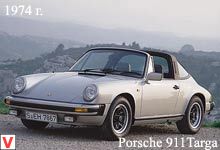
With an engine capacity of 2.4 liters, it had a maximum power of 190 hp. The drive was also improved, now it was possible to choose between four and five steps. For the first time, a front spoiler was mounted under the front fender to stabilize high speed at the fastest car 911. The 911S became a very elegant sports car that easily won hearts and the driver could enjoy the ride. The body of the Porsche 911 from 1973 was different.
The appearance of the car is up to date. The bumper got rid of the old-style chippers (fangs). And from this year appeared the eternal division into models of turbo and non-turbo. The fact that the company was one of the first in the world decided to mass-produce cars with an engine equipped with a turbocharger was a qualitative leap in the development of the 911 model.
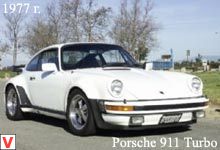
In October 1974, the Porsche 911 Turbo model was presented at the Paris Motor Show. In the role of the main driving force installed 3-liter engine with 6 cylinders and a simple turbocharger. Due to this, the car possessed dizzying technical characteristics: 260 horsepower at 5,500 rpm, acceleration from 0 to 100 km / h for 6 seconds, maximum speed of 250 km / h. The engine was paired with a 4-speed gearbox. With the transition to such power, the upper spoiler wing, which additionally presses the rear of the car to the road at high speeds, has become completely logical.
The standard body of the 911 had to be modified somewhat: the model was so powerful that they put a wider tire at the back, and this led to the expansion of the rear wheel arches. The car had 7 and 8-inch light-metal wheels with tires from Pirelli. The appearance of the 911 Turbo was a matter of pride. On all Porsche models, they began to install bumpers to match the body color with a spring-loaded part, which made it possible to keep the impact at low speed. These signs not only distinguish the Porsche 911 Turbo, but also give the car an elegant aggressiveness. The model became the flagship of the company and determined the development of Porsche for many years to come.
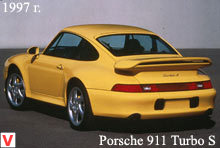
The car became known not only as a road, he won during the first participation in the racings in La Manche. In 1978, the Porsche 911 Turbo received a boxer-type power unit with a volume of 3.3 liters. This engine accelerates the car to 100 km / h in 5.4 seconds and has a maximum speed of 260 km / h. Such overclocking allowed this model to take a place in the supercar league, along with the most expensive - Lamborghini Countach, Ferrari 512BB, Aston Martin Vantage! Fuel consumption - 12.5 liters per 100 km. Engine placement - rear, cooling - air, five-speed gearbox, drive type - rear wheel drive.
Vehicle weight 1335 kg. The series existed on average 1.5 years. Therefore, by 1989 came to the letter V. In early 1985, the so-called turbo-look cars appeared. They looked exactly like a turbo, while having atmospheric engines.

It may be surprising, but in 1963 to 1989, the company produced essentially the same car. 25 years on the conveyor. Such is the record model. If the basic model of the Porsche 911 in the third generation was of the type 964, then the 911 Turbo version, which debuted in 1991, received a new 965 type in the new body. The car with the prefix Turbo was still the flagship of the Porsche model range. Under the hood it was a 3.3 liter engine with 330 hp capacity.
Complement the picture of the classic rear-wheel drive, improved brakes and 17-inch wheel rims. With the new 5-speed gearbox and a more powerful engine, the Turbo version has become much faster and more dynamic. In 1993, the Porsche 911 Turbo got a new 3.6-liter engine producing 360 hp. In appearance only two changes: 18-inch wheels and chrome inscription "turbo 3.6" on the hood (engine compartment cover). Five years after the start of production of the 964 body, Porsche has released a new model (factory index type 993). The new body was more perfect from the aerodynamic point of view. The engine remained the same - an air-cooled oppozitnik.
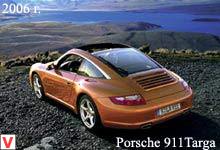
The pace of development of Porsche did not slow down, and literally a year later the Turbo model was introduced to the world, which radically changed. This time, the 911 Turbo had four-wheel drive and a crazy 408 horsepower at its disposal. Appeared in 1996, the Porsche 911 Targa (factory designation - 993) had a completely different look compared to its predecessor. Since then, the distinctive feature of the Targa has been a side window with a sharp accented corner and a sliding glass roof. The fifth generation 996 debuted in 1998. A completely new model - the first time in the history of 911.
From the old coupe there was only a layout with a 2 + 2 seating formula and the location of the boxer engine behind the rear axle. For the first time increased the wheelbase by 100 mm. The body got a new shape. The car was deprived of the classic headlights in the form of frog eyes. Under the hood, the engine is fully water-cooled and multi-valve distribution mechanisms as standard. Salon has become completely different. Natural finishing materials are increasingly giving way to composites and artificial leather. Porsche 911 lost part of the charisma, but continued to conquer the market.
In 2000, on the threshold of 21 millennia, the Porsche launched the 911 Turbo (996) with a water-cooled engine with a capacity of 420 horsepower. The new sixth generation of the legendary model 911 (type 997) debuted on the European market in July 2004. The model is distinguished by the classic round headlights for the 911 series, the new bumpers and the rear track expanded by 30 mm, but overall, the 997 styling can be described as evolutionary. Porsche 911 Turbo (type 997) - the fastest and perfect model. Thanks to two turbines, a six-cylinder horizontally opposed engine with four valves per cylinder, has an increased capacity of up to 480 liters.
with., and the maximum speed reaches 310 km / h. Like its predecessors, the car has all-wheel drive. Now, as standard, this model is equipped with almost every imaginable and unimaginable options offered by Porsche today. On November 4, 2006, the long-awaited and very significant event in the history of Porsche will take place - the worldwide start of sales of the Porsche 911 Targa in a new, 997th body. Targa is a completely unique concept of the 911 model range. Visually, the Targa is dominated by a glass surface starting from the windshield and ending with a rear rising glass. Stuttgarts did a good job on the sliding roof. New double-layered glass allowed making the panel 1.9 kg lighter.
A new system of guides and noise screens reduced turbulence in the cabin at high speeds. At the driver's command, two electric motors in just seven seconds and at any speed move the roof under the rear window and open 0.45 m² of sky above the head. The new generation differs slightly from its predecessor Targa 996 - the same roof racks, lifting rear window with a wiper. But for the first time in its history, the Targa appeared in all-wheel drive. And in two versions - Targa 4 and Targa 4S. Targa-4 is equipped with a 3.6-liter boxer engine with a power of 325 hp, which accelerates the car from 0 to 100 km / h in 5.3 seconds and allows you to reach speeds of up to 280 km / h.
The more powerful S-version (Targa-4S) uses a 3.8-liter engine producing 355 hp. Accelerating to 100 km / h in 4.9 seconds, the Targa 4S can move at a top speed of 288 km / h, which corresponds to the capabilities of a true sports car. Engines, gearboxes and all-wheel drive transmission with viscous coupling in the drive of the front wheels remained the same as on the closed Carrera 4 and 4S. Like all-wheel-drive coupe, the new Targa has wider (44 mm), compared with rear-wheel drive versions, the rear wings. However, the Targa has another small advantage: if you fold the rear seats, you get an extra luggage capacity - 230 liters.
And you can get to it with the help of a lift glass, which has a servo drive controlled from the passenger compartment or from a key fob.
